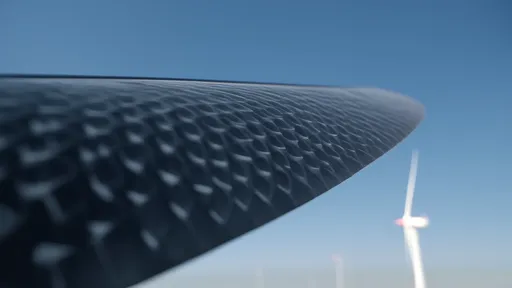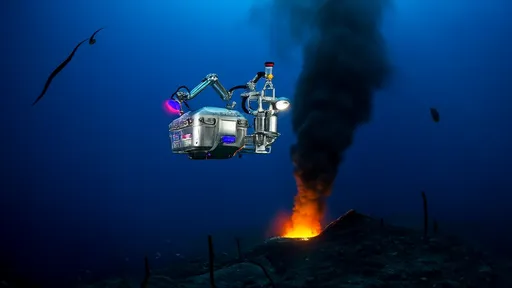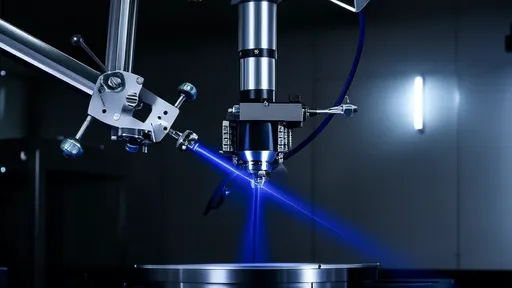The human brain has long been one of science's most enigmatic frontiers, its mysteries locked behind the formidable fortress of the skull. For neurosurgeons and researchers studying brain tumors, this biological armor presents a unique challenge: how to observe disease progression in real time without invasive procedures that risk damaging delicate neural structures. A revolutionary new technology is shattering this barrier—literally—with the development of transparent cranial windows serving as living observatories for brain tumors.
At the heart of this innovation lies a deceptively simple concept: replacing a portion of the skull with optically clear material that permits continuous microscopic visualization of the brain's surface. Unlike traditional imaging methods that provide snapshots in time, these crystalline viewports transform the skull into a dynamic biological theater where researchers can witness tumor cells migrating, blood vessels proliferating, and immune cells engaging in microscopic battles across days or even weeks.
The technology represents a marriage of materials science and surgical precision. Surgeons first remove a circular section of skull typically 5-8mm in diameter—large enough to provide meaningful observational data yet small enough to avoid structural compromise. This opening receives a custom-fitted implant made from medical-grade transparent materials, often zirconia or specialized polymers engineered to match the mechanical properties of natural bone. The implant's interior surface sometimes incorporates microscopic grids or reference markers that help researchers track cellular movements with extraordinary precision.
What makes these cranial windows truly remarkable is their biological integration. The transparent implants are designed to encourage the regrowth of the protective meningeal layers that normally cushion the brain against the skull. Within weeks, the body essentially "accepts" the artificial window, creating a stable interface that permits repeated imaging without provoking significant inflammation or scar tissue formation that would obscure observations.
For cancer researchers, this technology has opened unprecedented views into how gliomas and other aggressive brain tumors behave in their native environment. Through high-resolution microscopes aligned with the cranial window, scientists have documented tumor cells using blood vessels as migratory highways, observed how tumors co-opt the brain's vascular network, and witnessed real-time responses to experimental therapies. One particularly striking discovery revealed that certain tumor cells can "hitchhike" along the brain's network of microscopic tunnels normally used by neural stem cells—a behavior never before observed in living tissue.
The clinical implications extend beyond basic research. Neurosurgeons are experimenting with temporary transparent windows during tumor resection surgeries, allowing them to visualize tumor margins in real time under microscopic guidance. This approach has shown promise in helping surgeons achieve more complete tumor removals while sparing healthy tissue—a critical factor in improving outcomes for patients with aggressive brain cancers where every millimeter of preserved brain function matters.
Perhaps most intriguing are the immunological insights emerging from these living observatories. The brain's relationship with its immune defenses has always been complex, shielded by the blood-brain barrier and governed by different rules than the rest of the body. Through transparent windows, researchers have captured stunning footage of immune cells—once thought to be largely excluded from the brain—engaging in prolonged "conversations" with tumor cells through extended physical contacts that sometimes last hours.
As the technology matures, engineers are working to incorporate additional functionalities into these cranial windows. Experimental versions now include microscopic sensors that monitor intracranial pressure, oxygen levels, and metabolic activity—transforming the passive window into an active monitoring station. Some prototypes even incorporate microfluidic channels that allow localized drug delivery directly to the observed tissue region while recording the cellular response.
The ethical dimensions of this technology have sparked thoughtful discussion within the medical community. While most applications involve consenting adult patients, typically those already undergoing neurosurgical procedures, researchers emphasize the importance of maintaining rigorous ethical standards as the technology evolves. The potential benefits—accelerated development of better treatments, personalized therapeutic monitoring, and fundamental discoveries about brain cancer biology—must be carefully balanced against patient safety and privacy considerations.
Looking ahead, transparent cranial windows may soon move beyond cancer research. Neurologists speculate about applications for studying epilepsy, neurodegenerative diseases, or even the basic functioning of healthy brains. The technology's ability to provide longitudinal data from the same neural landscape over time offers advantages over traditional approaches that require sacrificing animal models at different time points to reconstruct disease progression.
For now, the brain tumor observatory remains primarily a research tool, but its impact is already being felt. Pharmaceutical companies are using data from window studies to refine drug candidates, while neurosurgeons report that observing tumors in vivo has changed their fundamental understanding of disease behavior. As one researcher poetically described it: "We've been given a key to a room we never thought we'd enter, and what we're seeing inside is rewriting the textbooks."
The transparent cranial window stands as a testament to medical innovation—a fusion of surgical art, materials science, and biological insight that has turned the skull from an impenetrable barrier into a lens for discovery. In the shadowy world of brain tumors, where so much remains unknown, these crystalline portals are shining new light on one of medicine's most formidable challenges.

By /Aug 5, 2025

By /Aug 5, 2025

By /Aug 5, 2025

By /Aug 5, 2025

By /Aug 5, 2025

By /Aug 5, 2025

By /Aug 5, 2025

By /Aug 5, 2025

By /Aug 5, 2025

By /Aug 5, 2025

By /Aug 5, 2025

By /Aug 5, 2025

By /Aug 5, 2025

By /Aug 5, 2025

By /Aug 5, 2025

By /Aug 5, 2025

By /Aug 5, 2025

By /Aug 5, 2025

By /Aug 5, 2025

By /Aug 5, 2025